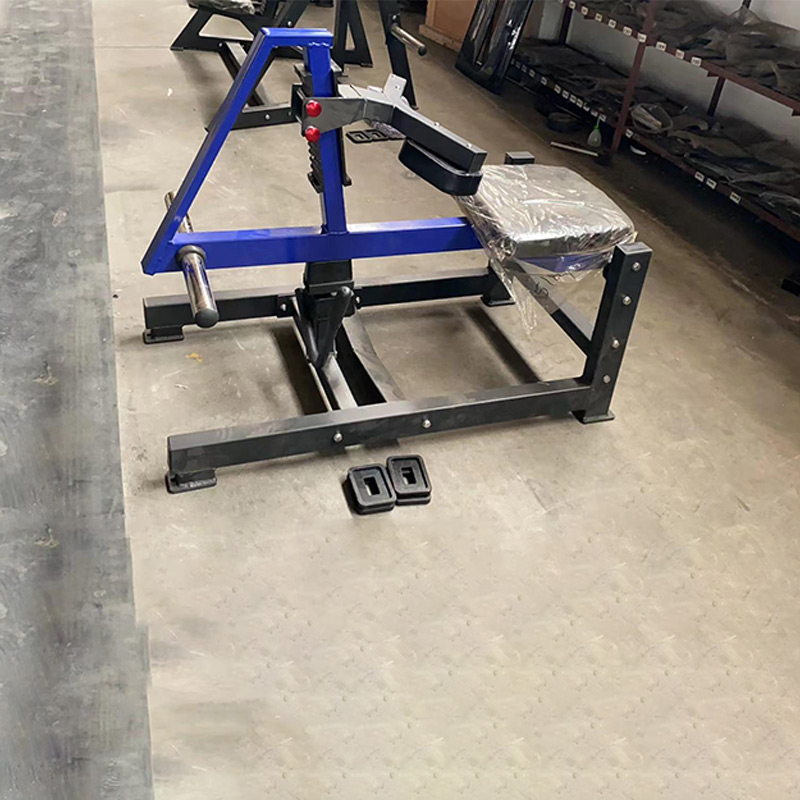The Seated Calf Raise is an exercise primarily targeting the calf muscles, specifically the soleus and gastrocnemius muscles. It is performed using a seated calf raise machine or a calf block with a weighted barbell or dumbbells. Here’s a detailed description of how to perform the Seated Calf Raise:
1. Equipment Setup:
- Adjust the seat height of the calf raise machine or position the calf block so that the balls of your feet can comfortably rest on the edge of the platform or block.
- Adjust the weight stack or select an appropriate weight for your strength level.
2. Starting Position:
- Sit on the machine or bench with your back straight and place the balls of your feet on the platform or calf block, allowing your heels to hang off the edge.
3. Movement Execution:
- Grasp the handles or sides of the machine for stability.
- Lift your heels by pushing through the balls of your feet, raising your heels as high as possible.
- Focus on contracting your calf muscles (soleus and gastrocnemius) throughout the movement.
- Hold the fully contracted position briefly to maximize muscle engagement.
4. Lowering Phase:
- Slowly lower your heels back down to the starting position, allowing your calves to stretch.
5. Breathing:
- Exhale as you raise your heels and contract your calves during the lifting phase.
- Inhale as you lower your heels back down to the starting position.
6. Tips for Proper Form:
- Keep your knees slightly bent throughout the exercise to avoid locking them and placing unnecessary stress on the joint.
- Maintain a controlled tempo, avoiding any jerking or sudden movements.
- Focus on the upward phase of the movement to maximize the contraction of the calf muscles.
7. Variations and Adjustments:
- You can perform the seated calf raise using different foot positions, such as toes pointed forward, inward (pigeon-toed), or outward (duck-footed), to target different areas of the calves.
- Adjust the seat height or calf block position to ensure a full range of motion and optimal muscle engagement.
8. Safety Considerations:
- Start with a lighter weight to familiarize yourself with the movement and ensure proper form.
- Avoid using excessive weight or momentum, as this can lead to injury.
- If you experience any discomfort or pain, adjust the machine settings or consult a fitness professional for guidance.
Incorporating the Seated Calf Raise into your workout routine can help strengthen the calves, improve ankle stability, and enhance lower body strength and endurance. Focus on maintaining proper form and technique throughout each repetition to maximize the benefits of this exercise effectively.



















































Reviews
There are no reviews yet.